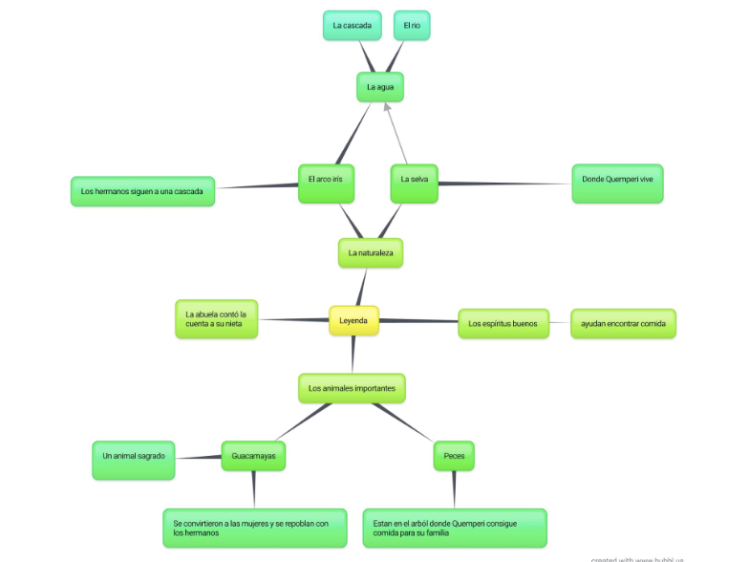
This year, we planned a PLC to allow us more time to collaborate with both Middle and Upper School teachers. We have some really excellent language teachers in the Middle School, but it is hard to find time to discuss what we are doing in our classes. Marcela Velikovsky shared a wonderful idea on how to have students create conceptual maps for the novels that they are reading. Both my department chair and I were eager to use it on our classes!
For her level 1 class, she gave them notecards with main events and people on them. They are reading Agentes Secretos, so she would write down main characters like Paula and Mario, places like Barcelona and Paris then other key words like romántica, mural etc. She gave them to the students then they would connect notecards on a large piece of paper and finish a phrase in between them. For example, one student may put the Paul card down then draw a line between Paula and romántica and write es on it: Paula ——- es——— romántica. Then they could use Paula again, draw another line and write Paula ——– habla con——– Mario. However, the students could organize the cards together in any order that they choose. I love the support for a beginning level class!
In her Spanish 2 class, Marcela allowed the students to brainstorm the events, people and places for the book Patricia va a California. Then, they did the same conceptual map using the notecards to connect them together. Students could discuss how they wanted to arrange all of the topics.
Today, I decided to do the same thing in my Spanish V class, but because it is me, I wanted to techify it! We have read two of Kara’s Ecuadorian legends. I had students brainstorm the characters, main events and the importance of each legend. Students worked in groups of 2-3. This allowed them to review and get more repetitions of key words and events. When they were revisiting each legend, they would also ask me clarifying questions.
After this, they used the program bubbl.us to make connections between the legends. I told them they couldn’t just make a conceptual map with legend #1 and legend #2. They had to think of ways that both legends intertwined. With the Bubbl.us, they don’t need to register, and they can just download their conceptual map at the end. Here are some of them:



I like the fact that the project was open-ended, and that it can be used at many levels. I was thinking that this would have been useful as we were reading Vidas Impactantes. You could also do something similar with vocabulary from a unit. Sara-Elizabeth used this last year with her students for Robo en la noche. Although you cannot include visuals, it would still be effective.
How do you use conceptual maps in your language class? Now that I have started, I can’t get enough!
One thought on “Conceptual maps in units and novels”